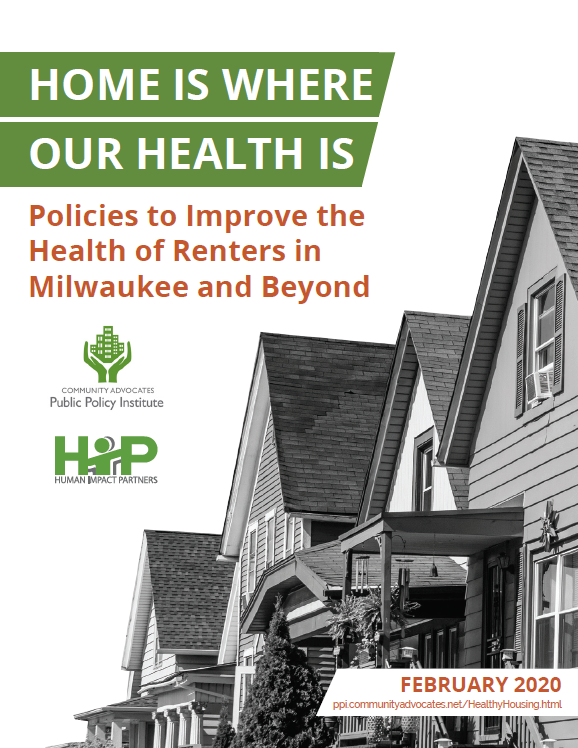Health encompasses more than meets the eye, and many of the various aspects that constitute health may seem out of your control.
For children, that meaning goes even further as they are still developing.
Besides components such as doctor care, exercise and eating nutritious foods, health consists of so much more, including where we live and what the environment in that area is like. To help address this important part of health outcomes, Human Impact Partners and Community Advocates Public Policy Institute teamed up — with the help of over 25 community representatives, including Children Health Alliance of Wisconsin’s Asthma Initiative — to produce a report titled Home Is Where Our Health Is: Policies to Improve the Health of Renters in Milwaukee and Beyond.
The report was part of a five-year project that was recently released and includes 32 policy recommendations to help improve housing in Milwaukee and beyond.
Langston Verdin, Program Leader of Strategic Partnerships, and Brittany Farrell, Asthma Project Manager, sat in on the project meetings to bring a children’s health and asthma lens to the conversation.
“The policies may seem audacious, but many of these are just common sense,” Verdin said. “These are upstream policies that can prevent kids, and even adults, from ending up in the emergency department. To accomplish that you have to think big and introduce policies like the ones included in this report.”
The report is intended for policymakers at every level, and leaders in public health, but the policies have the potential to impact renters throughout Wisconsin.
Mike Bare, the Research Program Coordinator for Community Advocates Public Policy Institute and director of the Healthy Housing Initiative, explained that the policies would positively impact children as they are still developing.
“A lot of research shows that a child’s health is linked to their parents’ health and their housing affordability, quality, and stability,” Bare said. “Children are impacted by hazardous materials found in older houses like lead paint and lead pipes … and a lot of the things that children are impacted by increase stress and can either worsen or cause chronic illnesses, increases hospitalizations and can shorten life spans.”
“Unhealthy housing can have an impact on developing brains, and you can’t necessarily turn that back.”
Fixing these health disparities can be solved by recognizing that health includes many external factors that seem out of our control, according to Bare, and the Home Is Where Our Health Is report is taking a step in the right direction to minimizing these issues. The full report may be accessed online.


